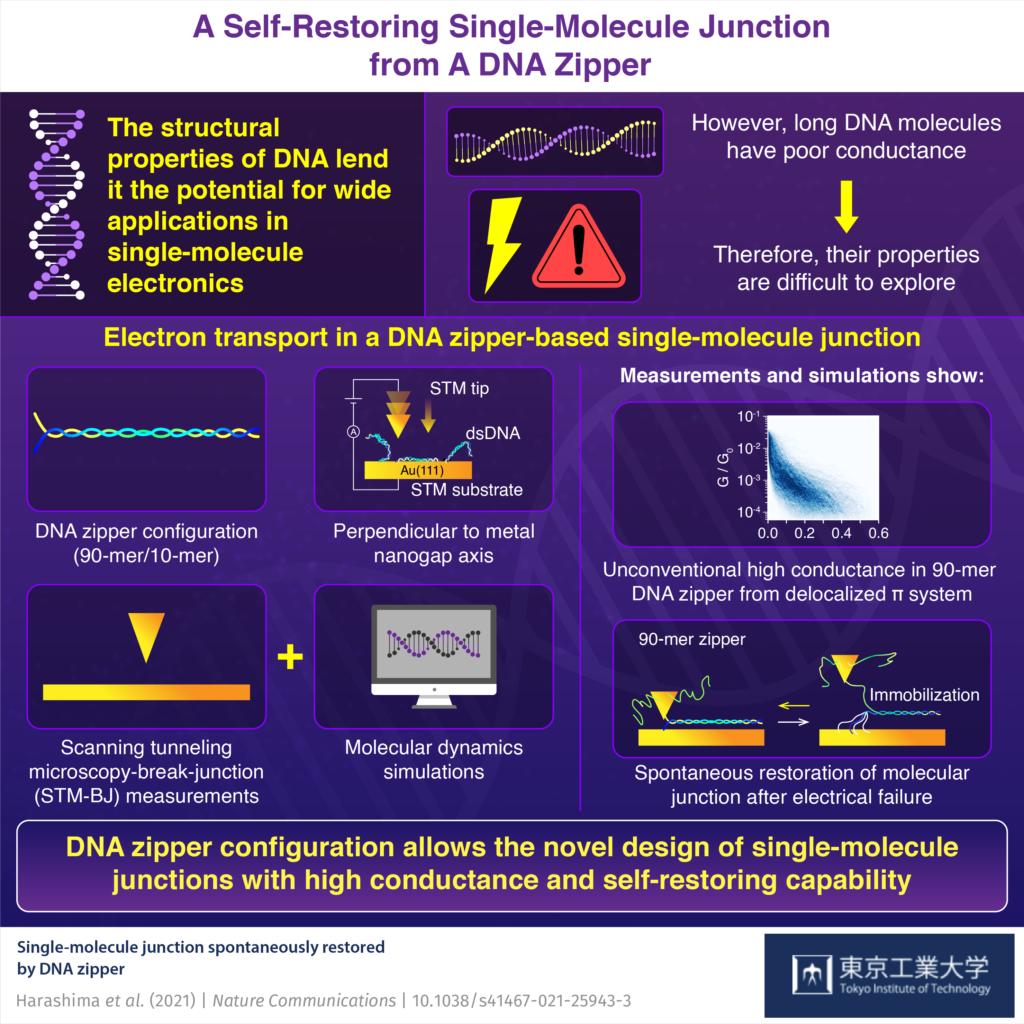Scientists in the field of molecular electronics have extensively explored how electrons travel through single molecules of DNA. They’ve shown that A and B configurations of DNA differ in single-molecule conductance and that the electrical properties of DNA change once it binds other molecules. Such studies use electronic devices with single-molecule junctions where a DNA molecule bridges a nanoscale gap between metal electrodes.
However, scientists have primarily focused on electrical transmission through a static DNA molecule at thermodynamic equilibrium. This is largely because only very short stretches of DNA have been successfully used in these electronic devices until now. Electrical conductance through single molecules of DNA falls sharply as the length of the molecule increases, posing technical limitations. But the structure of DNA is dynamic with shape-shifting higher-order structures. The effect of higher-order DNA structures on the design of single-molecule electronic devices has remained unclear.
In an article published in Nature Communications (“Single-molecule junction spontaneously restored by DNA zipper”), researchers at the Tokyo Institute of Technology claim to have achieved an unprecedented high conductivity using a single, long DNA molecule-based junction where the DNA molecule in a “zipper” configuration restores itself under electrical failure.

Tomoaki Nishino, PhD, associate professor at Tokyo Tech and who is senior author on the paper said, “We investigated electron transport through the single-molecule junction of a ‘zipper’ DNA that is oriented perpendicular to the axis of a nanogap between two metals. This single-molecule junction differs from a conventional one not only in the DNA configuration but also in orientation relative to the nanogap axis.”
The team used a 10- and 90-base-pair long DNA strand to form the zipper-like configuration and attach these to either a gold surface or to the metal tip of a scanning tunneling microscope that can image surfaces at atomic levels. The separation between the tip and the surface constitutes the “nanogap” that holds the DNA.
The team measured “tunneling currents” across this nanogap to estimate the conductivity through the DNA junctions against an empty nanogap that does not contain DNA, in “break-junction experiments” based on scanning tunneling microscopy.
They also carried out simulations of the underlying “unzipping” dynamics of the junctions. They observed that the single-molecule junction with the long 90-mer DNA showed an unusually high conductance. The simulations showed this could be due to a system of delocalized π-electrons that move around freely in the molecule.
Another interesting insight gained from the simulation is that the single-molecule junction can restore itself by zipping itself up repeatedly and spontaneously from an unzipped state without a complete structural breakdown, even upon electrical failure. This indicates, the single-molecule junction is both resilient and reproducible, providing a basis for new designs.
“Our study demonstrated that a DNA dynamic structural change could be applied to a single-molecule junction by using the zipper configuration. The findings pave the way for novel functionality and superior properties of nanoscale electronic devices,” the authors noted.
The team is excited about future ramifications in technology based on their discovery. An optimistic Nishino said, “The strategy presented in our study could provide a basis for innovations in nanoscale electronics with superior designs of single-molecule electronics that could likely revolutionize nanobiotechnology, medicine, and related fields.”




